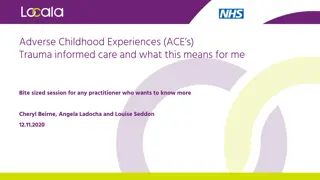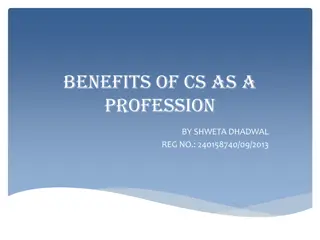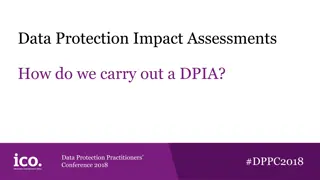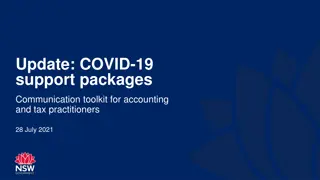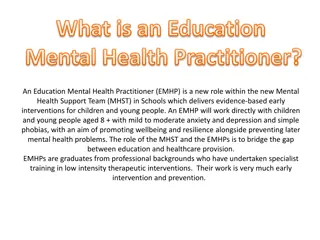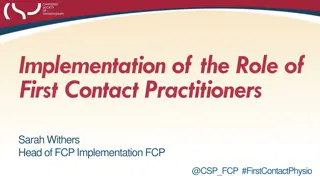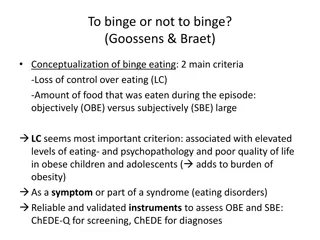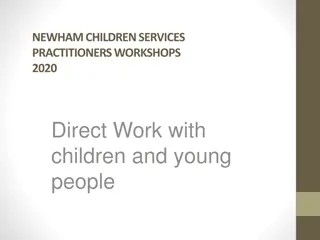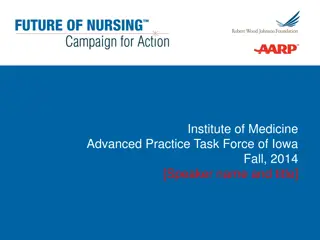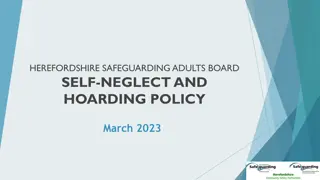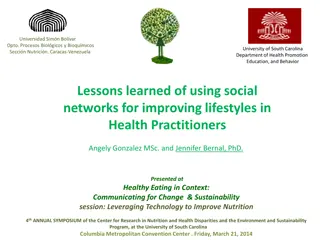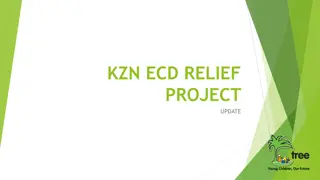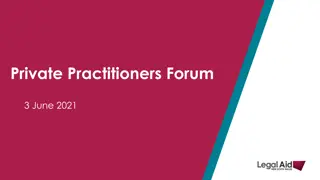
Sports Rehabilitation Guide for Prisoners: Bridging the Gap
Explore a comprehensive guide aimed at prison administrations, staff, and prisoners to utilize sports as a tool for social impact and reintegration. Discover through-the-gate programs, practical tips, and strategies to connect inmates with the outside world through sports.
Download Presentation

Please find below an Image/Link to download the presentation.
The content on the website is provided AS IS for your information and personal use only. It may not be sold, licensed, or shared on other websites without obtaining consent from the author. If you encounter any issues during the download, it is possible that the publisher has removed the file from their server.
You are allowed to download the files provided on this website for personal or commercial use, subject to the condition that they are used lawfully. All files are the property of their respective owners.
The content on the website is provided AS IS for your information and personal use only. It may not be sold, licensed, or shared on other websites without obtaining consent from the author.
E N D
Presentation Transcript
Camilla de Concini Unione Italiana Sport per Tutti, Italy
What is the objective of the guide? To help people working and living in prisons to use sports as a tool to create social impact and bridge the gap between the outside and inside world.
For whom is the guide intended? prison administrations prison staff prisoners education personnel social & sport organisations the voluntary sector can use this guide >> to establish through the gate sports projects
What is a through the gate program? These projects are designed to prepare and accompany prisoners in the delicate phase of their release and reintegration into society. They therefore provide for both in-prison and out-prison actions, with a strong follow-up component and the construction of a "reception" system that supports and follows the released person.
Why should I read the guide? To find practical and concise information To experiment / develop / implement pilot activities to bridge - through sports - the inside prison and the outside world
Practical & Concise Tips icons Key Questions Hyperlinks Basic conditions QRcode Quotes
What will I find in the guide? various development strategies evaluation examples practical models tips and lessons learned >> to enable you to organise sports programmes that can be a bridge between prison and the outside world
Table of content Introduction - background and methodology Legislative framework - Europe / partner countries Making it happen - planning your project Evaluation - theory of change Learning areas - SPPF project activities Challenges What s next? Conclusions Further readings and references
Legislative framework Nelson Mandela Rules UN General Assembly multilateral treaty - 1976 Respect the civil and political rights of prisoners Essential purpose of the treatment of detainees is their reformation and social rehabilitation. The European Prison Rules Council of Europe - Provide prison staff with essential guidance on how to protect and safeguard the human rights of people in prison.
National legislation There is something in almost every national law about the right to practice sports or other activities in prison but it is much more difficult to find legislation about using these activities to create a social impact. There is still a big disparity between countries.
Making it happen: planning your project Organising a good sports activity, connecting and bridging project in a prison context >> never an easy task (specific target group/ difficult environment) Setting up a follow-up ( through the gate support) project >> even more difficult (involves many other issues, e.g., communication with external partners, working outside the walls, setting up buddy systems, )
1.Deciding your aims Awareness of your objectives will enable you to: Clearly understand what you want to achieve. Be able to explain to prison management and staff, participants and external organisations what your objectives are and how they can benefit from them. Track how your project is progressing. Measure your success to prove your impact. Secure future programmes. Be able to improve your work in the future
1.Deciding your aims (2) Create, share and discuss a logic model: Within your organisation - every member is an ambassador With the Justice Department/Prison - involve and inform prison management and staff: explain your objectives and assess practical problems together Share and discuss the results of your exercise with all your partners within the project Involve your national government and/or policy makers
2. Identifying stakeholders Finding the right partners is essential: you can use sport in prison to connect with the outside world and organisations in other sectors (e.g. education, social welfare, and employment) According to our experience, the best is to combine: Social partners Sports clubs/federations Justice department (Ex) Prisoners - peer work
SOCIAL PARTNERS Not just social trainers: Ex-detainees - once out - need connection with social services, city services, employment and housing services. A social partner can have the right network to help you with this. CLUBS / FEDERATIONS / SPORT ORGANISATIONS The club is an important space and an opportunity for (ex-) detainees to establish new social relationships. It will enable (ex-) detainees to create a foundation on which they can build on to start a new life.
JUSTICE DEPARTMENT It is imperative to involve the prison services in your project. Develop a road map and discuss your plans and objectives with them. (EX-) PRISONERS: PEER WORKING Peer working assumes that people receive information more effectively from someone they identify as a peer than when they receive information from someone they cannot identify with. Peer working opens doors and takes away potential barriers.
ADVANTAGES OF PEER WORKING Detainees are more motivated because they define and organize the activities themselves. They increase their self-esteem and self-confidence when they manage to find a solution to a problem. They feel responsible for the success of the program. They learn teamwork skills. They establish contacts with external organization.
3. Develop a problem and needs analysis Before starting: Prepare a complete problem and need analysis. Conduct preliminary research on sport programs, follow up trajectories and their potential social impact. Organize preparatory meetings with the justice department, prison direction, stakeholders in the prisons and potential sports partners to share all collected information. Prepare the different actions.
4. Involving outside organisations Link to the outside or through the gate * External organisations specialised in setting up processes and developing certain skills needed for the project. You support and knowledge about prison context and the specific target group. * Develop a buddy system. Do this before the start of the actual project, this way you can get them involved from the very start.
5. Recruiting/selection participants Which detainees you want to work with depends on your aims Choose a specific target group within the overall population. Build a group around a shared topic/interest. Work with small groups of up to 10 to 15 people. Work with prison social services to select candidates. Discuss who has prospects of freedom ( through the gate ). Organise admission interviews. Give your partners a say in the admission conditions. Be clear to potential participants about the objectives of the project.
6. Timing Work with a detailed timetable. Make sure that all phases of implementation can be achieved without moments of undue pressure among the partners. Take a moment to reflect on the fact that every project can face unexpected events but prison times are even longer than outside! Bureaucracy, permissions, evasions, strikes ...
7. Basic conditions To lead a successful project you need to make sure that basic conditions are met. You are unlikely to find a prison or partner organisation where all the basic conditions are immediately met but it is important to do something about those that are not.
7. Basic conditions LOCATION: Available - enough - infrastructure - safety PROFILES: Prison support - partners expertise/needs TIME:Develop trust - shared time schedule - coaching, mentoring and supporting participants - disruptions HUMAN RESOURCES:Enough people - ambassador - clear roles RESOURCES:Materials: enough - agreed - security - supply - sponsors SECURITY:Security constraints - risks - privacy - security plan COMMUNICATION:Share communication plan, participants, all stakeholders, inform of developments, problems
Why a digital guide? Ecological Need oriented: skipping - going deeper So that you can print just what you need Downloadable wherever you are For you to choose the language you prefer To be European and local at the same time




